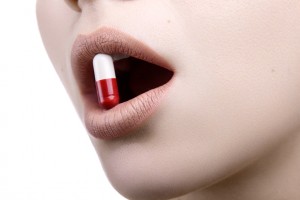What is probiotics
We TAKE Probiotics for gut health so does what we EAT DRINK TAKE MAKE count towards our gut health? Our digestive problems or overall digestive health alone requires personalised nutrition. Here’s why…
FAQ: which is the best probiotic to take? How, when and even why we eat = nutrition and lifestyle habits = information. This feeds our or nourishes or bodies and informs our gut health and wellbeing. So let’s make choices that count towards OUR health.
Probiotics and Prescript Assist – probiotics and antibiotics and probiotics and prebiotics – find out about them here
We have all that friend. They’re super healthy. They eat whole foods, they workout. Yet, they’re catching bugs or unwell. A lot. They look and feel tired all the time.
So this super healthy friend, eating seasonal whole foods – nutrient rich… outside their body. Inside? Useless.
Is this why we’re all taking Probiotics? Well, probiotics do far more than improve digestive function and our ability to stay ‘regular.’ Possibly, Probiotics are the best natural solution for eliminating bloating and puffiness. Probiotics are the safest way to get a healthier, flatter stomach. However, not all probiotics are created equal.
10 Tips For Choosing A High Quality Probiotic
1) Different Probiotics work in different ways. You should discuss what you want to achieve by taking probiotics safely.
2) It is important to Know The Strain. The most common strains you will find are bifidobacterium and lactobacillus. Medications that decrease the immune system (Immunosuppressants) interact with lactobacillus strains. Lactobacillus acidophilus is thought to help with the digestion and absorption of lactose by producing lactase. This may be helpful for those with Lactose intolerance – usually the result of a lactase deficiency.
Probiotics means ‘for life’
They are defined by the World Health Organisation (WHO) and the Food and Agriculture Organisation (FAO) of the United Nations as ‘live microorganisms which, when administered in adequate amounts as part of food, confer a beneficial health effect by producing gut microflora on the host’.
Probiotics often are not that effective at re-populating the gut flora – Prebiotics are more effective for that. The health benefits of probiotics go beyond gut health.
Vegan Probiotics
If you are vegan it can be challenging to find a vegan probiotic. Some brands use milk in the manufacturing process, or have gelatin-derived capsules, or use bee products. It is not impossible, however, to find a vegan-friendly probiotic formula. It should be all of the following: (i) dairy free probiotic (ii) casein free probiotic (iii) gelatin free probiotic (iv) bee product free probiotic
If you are sensitive to dairy you can find dairy-free probiotics and increase your food intake of probiotics with these foods that are also vegan diet friendly: Ten Dairy Free Probiotic Foods
If you are taking antibiotics it is good to start a Saccharomyces boulardii or S. boulardii probiotic. Take these while still taking the antibiotic as this is a yeast strain (antibiotics cannot kill it). Taking these rather than bacteria and can help prepare the internal environment to welcome new “good” bacteria back into the body. This happens once the antibiotic has done its job of clearing bacteria from the body. There are quite a few randomised, placebo-controlled trials for e.g. here and here that have demonstrated the effectiveness of probiotic use during a course of antibiotics. This is specific for reducing side effects and preventing gut infection. Prebiotics are an important part of any regimen to protect or rebuild a healthy microbiome during and after antibiotic use.
3) Demonstrated safety in vivo and In Vitro Studies SBO probiotics have risen in recognition recently as clinical evidence grows to support their traditonally-derived approach. Species from the Bacillus genus, a gut-adapted spore-forming bacteria is found in certain probiotic products. It has been demonstrated to be safe and effective in in vitro and in vivo studies. 4) Clinical Trials – Many probiotic products have not been validated by peer-reviewed, clinical studies. The best products are those that have been studied in the scientific literature.
5) Shelf Stability – Probiotics should be shelf-stable i.e. do not require refrigeration. Many probiotics require refrigeration and lose their potency if not stored within a very narrow range of temperature and this is inconvenient in today’s modern, mobile world. A shelf-stable probiotic is easier to take consistently because you can take it with you wherever you go.
6) Strength – A superior delivery can more than compensate for a product with a lower CFU count i.e. Colony Forming Units. That said, a true probiotic effect involves a significant number of CFU (preferably 10 billion CFU or more per serving). This serving produces significant quantities of lactic acid within our intestinal tract. One of the roles of stomach acid is to prevent harmful bacteria from entering our bodies. However, stomach acid will also kill good bacteria that we swallow in the form of probiotics—unless the bacteria is protected from that acid in our stomachs. Delivery does not only mean making the probiotic go through the stomach alive. The best delivery systems keep the probiotics together in a protective gel as they move deep into the intestinal tract. The more pristine this gel state can be kept, in terms of allowing only probiotics to grow, the better. 7) Time Of Manufacture – always read the label. A time of manufacture guarantee declares the amount of CFUs in a probiotic at the time of production
8) Too Many Strains? The most effective probiotics contain several different strains of bacteria that work together synergistically to mimic the natural flora found in the human gut. A broad spectrum of bacterial chains is generally advised. This is unless specifications in point 2) apply e.g.of broad spectrum is 29 strains of beneficial microflora
9) Viability. To repeat point 6) the good delivery system is required. This is for the probiotic product to remain viable on the shelf. Also, through the harsh acidic environment of the stomach — delivering active, therapeutic levels at the time they reach the lower GI tract.
10) Value & Gluten Free & Dairy Free. Always read the label.
In the last ten years, studies of the human microbiome, have propelled our appreciation for studies into probiotics. The microbiome is defined as the collective genetic identity of the microbes. These microbes are composed of bacteria, bacteriophage, fungi, protozoa and viruses. They live inside and on the human body and provided us with much data. These bacteria help to balance pH and maintain immunity. They aid in absorption and synthesis of nutrients, to neutralise harmful compounds and produce short chain fatty acids. Short chain fatty acids play a role in the digestive process as well.
In summary, the health benefits of probiotic therapy depend on choice factors. The type of bacterium dosing regimen, delivery method and other underlying host factors. For e.g. the age and diet of the host. Really we cannot summarise this topic just yet: points 3) and 4) call for regular updates. This is an important part of delivering the best personalised nutritional plan for you.



